Nitrite can cause significant damage to aquatic inhabitants or even kill them.

So how do you protect them if an imbalance occurs?
Why is it that with goldfish nitrite levels can spike more often?
How to reduce said levels on time, without suffering fish losses?
Essentially, you should change some of the water to offset potential damage and then introduce beneficial bacteria in some form to help convert the Nitrite into Nitrate.
But is there also a silver bullet nitrite remover that can take care of the mess?
Let’s dive right in.
- Organic matter degrades to ammonia (NH3).
- Bacteria convert that ammonia to nitrites (NO2-).
- Other bacteria transform the nitrites in nitrates (NO3-).
With that out of the way, we can answer the important questions.
How to promptly lower the nitrite levels in your freshwater aquarium?
Nitrites are the second most toxic byproduct in the nitrogen cycle of an aquarium.
They can be lethal to most freshwater fish if not handled on time. To promptly lower the high nitrite levels in your freshwater aquarium follow these exact steps:
1. Change 30% of the water.
With this initial step, you aim to replace part of the nitrite-rich water and dilute the harmful compound in the tank.
By physically diluting the concentration you will ease the negative effects on your livestock.
I recommend splitting the 30% into two partial water changes of 15% and performing them 1 to 2 hours apart. This way you’ll make sure that the drastic shift in parameters that comes after a larger water change won’t finish off your fish.
Fish can adapt to gradual changes in their environment, including an increase in nitrites.
However, by performing a large water change you significantly alter the water chemistry in a short matter of time.
This can send you fish into an osmotic shock, which is the last thing your fishpals need.
Author’s note: Water changes can also help with reducing high Ammonia levels in your fish tank.
2. Add nitrifying bacteria
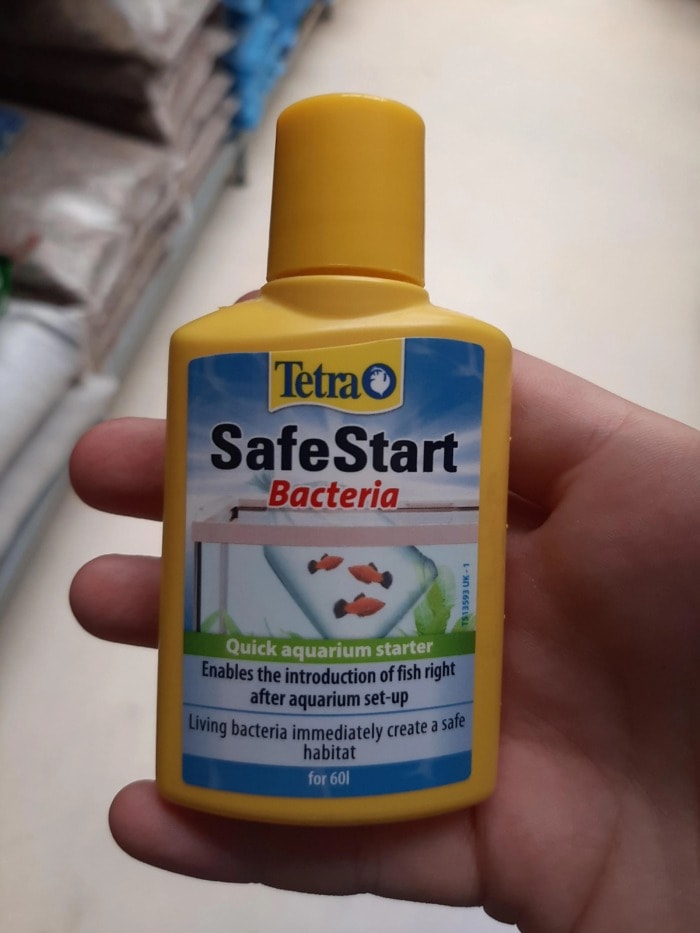
by flexed_guitar
Since high nitrite levels are signaling an incomplete nitrogen cycle, adding some good bacteria to the system should be your second course of action.
One of the most efficient ways to quickly add beneficial bacteria to your tank is by using bottled bacteria. There are many bottled bacteria products on the market.
Most of them are complete garbage, however, the reason being the use of cheap-grown land-based nitrifying bacteria.
These land-based organisms will essentially outcompete the not-well-established aquatic bacteria and then die out in underwater conditions.
And then you’ll be left with another spike in nitrites and no one to handle that. Luckily, after conducting my own experiments, I found four sound products that do actually work as marketed.
I also did a detailed comparison between two of them here, and namely Tetra SafeStart and API Quick Start. In the link, I also include the correct ways to use them.
For the purpose of controlling nitrites, I strongly recommend using Tetra’s SafeStart Plus.
From what I’ve found, it arguably has more nitrite-converting bacteria than API’s Quick Start product.
Look it up online (you can check it out here, on Amazon) or rush to your local fish store and buy it, as soon as you have the chance. If you do end up in the fish store make sure to get a bottle that’s as manufactured as recently as possible.
Amazon supplies are usually fresh, but in some cases, you may get lucky in your LFS as well.
Dose accordingly, but in my experience, you should pour the whole bottle in anything larger than 30 gallons.
It is beneficial bacteria and it won’t do harm to your fish.
I’m sure you already figured that but here it is anyway- supply yourself with the bacteria first, so you can add it immediately after the initial water change from step number one.
Avoid changing the water for the next couple of days to let the bacteria establish themselves.
The only time you should change water is if there’s a following inexplicable spike in Nitrite.
Though Seachem is a reputable brand in the hobby, they refuse to name the bacteria used in their product.
This is what stopped me from even bothering to test it, and therefore I can’t really recommend using it.
3. Set up a filter if you haven’t already

by GandolfBesh
The media in our aquarium filters is where most beneficial bacteria live.
By setting up a filter you will do two things – improve the oxygen levels in the water and provide a living place for the new bacteria.
The first will help your present fish to cope with the lower oxygen levels in their blood, caused by the potential nitrite intoxication.
If you happen to have another established tank around you’re in luck.
Use SOME of its biological filter media in your nitrite-rich tank.
There you’ll have an already thriving bacterial colony that could immensely speed up the cycling process in the problematic fish tank.
Don’t borrow too much.
I’d recommend no more than 30% of the total biological media.
Aquarium filters are an invaluable piece of equipment when it comes to maintaining stable water parameters.
Even though you can harbor live fish without one, doing so is extremely difficult and requires advanced fish keeping knowledge.
So do your fish and yourself a favor, and don’t skimp on the aquarium filter.
Smaller aquariums can do with a simple HOB or sponge filter which barely cost a thing.
Note: For larger aquariums, perhaps, a smart decision would be to set a canister filter, as they have way more space for filter media and provide a very decent water turnover.
4. Add substrate from an established aquarium
The logic behind this is pretty much the same as in the previous step.
Bacteria also inhabit the substrate of your aquarium.
By adding some substrate from an established aquarium to your affected one you improve the bacteria’s numbers.
I’m emphasizing some, as you don’t want to inflict the same pain to your other fish.
A few scoops should be able to aid you in the battle against nitrite.
5. Hook up your filter to an already established tank
If by chance, you have another up-and-running aquarium, you can connect your filter to it and let it run for a week.
This will let the bacteria from your old aquarium colonize the media in your new filter.
Afterwards, all you need to do is install the filter into the new tank and wait until the nitrite levels drop.
Needless to say, you shouldn’t remove the filter from your already established aquarium if you’re going to attempt this. Doing so will remove all of the beneficial bacteria from it and ruin the nitrogen cycle.
Another thing I should point out is that this method will only work if you’re setting up a new aquarium.
If you’re dealing with a nitrite spike in an established aquarium, you should skip it.
How to (and should you) reduce nitrites in a saltwater fish tank?
In saltwater fish species nitrite is not toxic at all, or at least not notably toxic.
In freshwater aquariums, nitrite can be absurdly toxic to the fauna.
This is because it blocks oxygen uptake by binding to hemoglobin and transforming it into methaemoglobin.
Chlorides, however, prevent this by inhibiting the uptake of nitrite from the water.
And since the chlorides in freshwater aren’t enough, there’s nothing to stop nitrite from entering a fish’s bloodstream.
In some cases of elevated nitrite, this leads to chloride depletion in a fish’s body.
After nitrites enter a fish’s system, the balance of a number of biological mechanisms gets disturbed.
However, when salt is present in the water the chloride levels skyrocket.
That’s because the salts in saltwater contain chloride as is seen from their chemical formula, which is NaCl (Sodium + Chloride).
At chloride levels of 1.94% (or ~19,350 ppm) the nitrites can not outcompete them and poison a fish.
In some cases, a freshwater fish specimen will be a THOUSAND times more sensitive to nitrite than a saltwater fish.
The sensitive freshwater species are usually the ones that have adapted to living in soft water.
See, I’m not a chemist, but I do read a lot, to ensure the safety of my fish. I learned all of that from this guy, who’s a doctor and knows what he’s talking about.
If for some godawful reason you managed to raise them that much you should introduce nitrifying bacteria to the tank:
BIO-Spira and API Quick Start are very useful here.
Tetra SafeStart Plus is designed for freshwater aquariums by definition and won’t be of use for a marine tank.
Anyway, either BIO-Spira or API’s Quick Start will speed up the nitrogen cycling.
Still, if the nitrites are this high, there’s probably something large that is rotting or you just threw out too much filter media or substrate and decor.
Signs of nitrite poisoning going on in the aquarium?
Sometimes you can spot the symptoms of nitrite poisoning without a test kit.
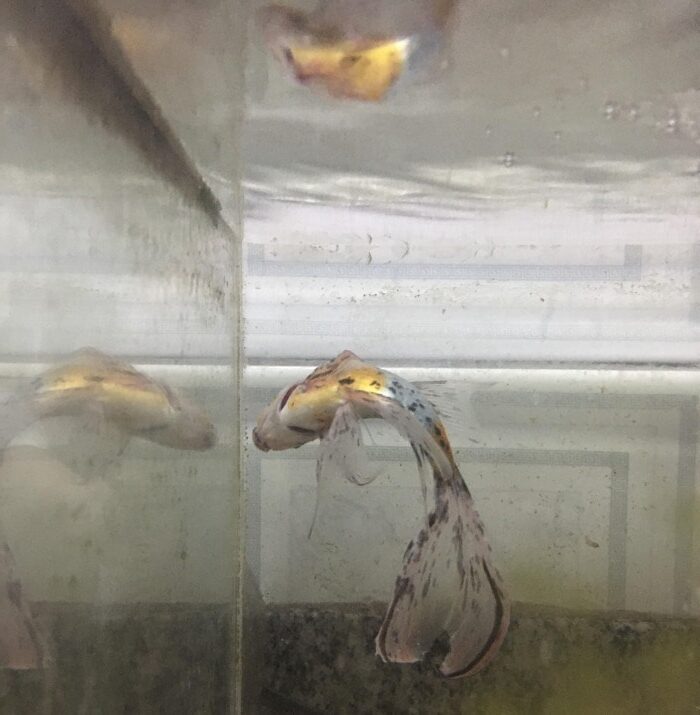
by Trickshroom
Affected fish can show clear symptoms identifying the presence of nitrites.
The signs in fish behavior that signal high aquarium nitrites are the following:
- darkened coloration of the gills;
- lethargic fish that are otherwise active;
- the death of an otherwise healthy fish;
- fish are gasping, with fast movements of the gills;
- constant striving to stay near the water surface.
How to protect your freshwater fish from nitrite intoxication?
The owners of freshwater aquariums should be concerned with their fishes’ health during elevated nitrite levels.
To protect your freshwater fish from nitrite poisoning you should:
- Relocate the fish to an established tank.
This is quite obvious, but some fishkeepers may underestimate the toxicity of nitrite.
Relocating your pet fish is your best bet to ensure their safety and prevent mortalities.
However, I’m assuming that most of you that read this don’t really have an established tank laying around.
Either this or it is full of large predatory fish that won’t really get along with the newcomers. In that case…
- Add rock salt to the water. By adding rock salt to the aquarium you enhance the present levels of chloride.
The elevated chloride will prevent the nitrites from entering your fishes’ body through the gills.
This will make them significantly more tolerant of the toxic compound.
Add 1 teaspoon of non-iodized salt per 10 gallons of water.
However, do your research on your fish before that. Most all scaleless fish (corydoras, loaches, some other catfish), tetra species, most invertebrates, and aquatic plants are very salt-sensitive.
You can use Aquarium-grade salt as well if you have that around.
I do not recommend buying it for the sole purpose of treating nitrite poisoning as it is just overpriced regular rock salt.
Kosher salt, however, is a sound choice.
- Add an air-stone.
After the nitrites enter your fish’s bloodstream they bind to the hemoglobin, oxidizing it to methemoglobin.
The latter does not carry oxygen, which can result in suffocating fish.
This is often called Brown Blood disease.
By adding an air-stone to your aquarium you aim at providing more oxygen to support the already O2-deprived fish.
Prime is a binder. It binds to the nitrites, converting them to other harmless molecules, and the process is labeled as “detoxifying”.
So far, so good, right?
Well, not exactly.
If the bacteria fail to transform all the detoxified nitrites while the effect of Prime lasts they may become overwhelmed when the binder’s effect expires in 24 hours or so.
Another thing to consider is that if you’re using tap water for your freshwater aquarium it will most likely be disinfected through Chloramine instead of Chlorine by your water facility. Chloramine is actually chlorine + ammonia. Seachem Prime removes the chlorine and detoxifies the ammonia.
But that’s actually extra ammonia released in the aquarium by the chemical bond of the two after Prime’s effect expires.
And that’s extra amount converted to nitrite after…
After 48 hours of a nitrite-free aquarium, you will be at your starting point.
This puts many inexperienced fishkeepers in the situation where they continuously use Prime ($$$), claiming it helps the nitrogen cycle.
This is simply wrong and a waste of money.
It is the tank’s bacteria that should be able to handle all the ammonia and nitrite and not external supplements.
High nitrite readings, but 0 ammonia?
The explanation behind this is very simple:
Whenever your aquarium has high levels of nitrites but no present ammonia, it means that it is halfway through its nitrogen cycle. Essentially, the ammonia-converting bacteria have established themselves, while the nitrite-oxidizing colonies are still insufficient in numbers.
If your tank is brand new – this is not the time to add fish, unless you introduce beneficial bacteria in some way. In fact, this is a common vicious cycle where an aquarist would keep seeing their fish die one after the other in their new tank and have no idea why.
Under normal circumstances, the nitrites should get converted to nitrates in 2 to 6 weeks. However, if the water temperature is below 70°F, it will take longer than that. Conversely, if your tank has been established for a while and this happens – something hindered its nitrogen cycle by releasing too many organics into the water.
Acceptable level of nitrites in an aquarium?
It is “acceptable” that we’re discussing here, so depending on your setup and fish species the answer can vary.
However, there’s a universally safe nitrite reading for any aquarium out there:
Generally, the safe level of nitrites in an aquarium is considered to be between 0 and 0.2 ppm (ml/g).
Bear in mind that some species of fish are more nitrite-tolerant than others.
What causes the progressive intoxication is the rapid ingestion of the poison (actually aiming for chlorides) through the gills.
Some fish species do not take up chloride from their gills, which makes them more tolerant to a nitrite spike.
On the other hand, some species of catfish, the fathead minnow, the roach, and the tench fish may be able to withstand a reading of more than 4 ppm.
For saltwater fish, the lower barrier will be as much as 30 ppm of nitrite.
This is quite a lot and, honestly, very unlikely scenario in a home aquarium.
The honorable mention goes to the common eel, which can live comfortably for as much as 4 days in water that has over 1600 ppm of nitrites.
Impressive stuff.
How you got high nitrites in the first place?

Obviously, something lies behind all of this. Well, let me guess.
The significant spike in nitrite levels in the aquarium appeared after:
- You recently added too many fish at once;
- You recently started the aquarium (less than a month and a half ago);
- You did a full clean of the filters and substrate or changed them;
- You have a heavily planted tank but forgot to prune and remove dead leaves lately;
- One of your fish has recently died but you did not immediately remove its body;
- You feed your fish more than twice a day;
- You treated the water with an antibiotic without removing the biological filter first;
- You put ice in the water in an attempt to cool it on a hot summer day;
- You didn’t dechlorinate before a water change;
- You have an overall small fish tank (under 10 gallons).
What all of these have in common is the imbalance between the levels of produced nitrites and the numbers of beneficial bacteria that convert them.
That’s because beneficial bacteria take time to establish themselves whereas any aquarist can almost instantly increase the things that produce nitrite in a tank.
When a complete nitrogen cycle is established in an aquarium the nitrites will be converted into nitrates as soon as they appear.
Adding more than 3 small fish at once can be the difference between overwhelmed bacteria and a healthy 20-gallon tank.
Goldfish are even messier, as are most freshwater eels and other larger carnivorous fish. It is why the “1 inch of fish’s body per 1 gallon of water” rule in aquarium keeping is and always has been utterly wrong.
I mean, fish stores have to make the most of any situation and budget, right?
Another way fishkeepers get rid of their beneficial bacteria by accident is cleaning the tank too much or changing decor and too much of the old filter media.
The biological filter media should only be cleaned when really dirty, and it should be rinsed in dechlorinated aquarium water and not untreated tap water.
Chlorine (or respectively Chloramine) in tap water is harmful to bad AND good bacteria.
And so are antibiotics.
Rotting organic matter can also cause a nitrite spike as it elevates ammonia.
And that includes anything from a dead fish that went unnoticed to copious amounts of waste, food leftovers and even dead plant matter.
Lastly, sudden temperature changes can stress and eventually kill your beneficial bacteria.
Temperature changes in any aquarium should be implemented gradually.
So how to prevent nitrites building up in your aquarium?
The only sure way to stop nitrites from rising is to maintain a stable nitrogen cycle.
This is achieved by ensuring the well-being of your beneficial bacteria.
Overwhelming it with work will inevitably cause an unwanted imbalance in nitrites, nitrates, and even ammonia.
To prevent excessive levels of nitrite in your aquarium, follow these rules:
- Feed your fish once a day.
Offering a meal once a day is a secure way to avoid overfeeding and leaving spoiling leftovers at the bottom of the tank.
You can eliminate overfeeding by getting an automatic feeder.
My heart lies with Eheim’s one (click the link to view it on Amazon.com).
It’s pretty reliable – just set it and forget it.
You also get the added benefit of feeding your fish while you’re out of town.
- Dose food accordingly.
You should not starve your fish, but giving them too much food will result in water pollution.
- Get a bottom-feeder.
Bottom feeders, such as rubber lipped plecos (really cheap, by the way) will scavenge the substrate for leftovers, cleaning them for you. Don’t fool yourself – the bottom-feeding fish itself will also produce waste in the process but it will save you some worries about cleaning food from the substrate.
- Don’t clean all of your aquarium filters at once.
Don’t clean the gravel too often as well, as these places harbor the nitrifying bacteria.
In fact, your substrate holds nearly 20% of all the nitrifying bacteria in your aquarium, so cleaning it all at once might disrupt the nitrogen cycle.
- Rinse your filter media with used aquarium water and not tap water.
Chlorine in tap water is lethal to the good bacteria in a fish tank (click the link to learn how to naturally dechlorinate your water if you want that).
- Do not overstock your aquarium in short periods of time.
Adding too many fish at once will overload your tank with organic waste.
You will lose fish, money and your nitrogen cycle (time) in the process.
- Perform 25-30% water changes on a weekly or bi-weekly basis.
This helps to dilute the contamination in the water, easing the work of the bacteria.
- Set up sufficient aeration.
This will help the fish to get sufficient oxygen from the water, lowering the chance of nitrite poisoning.
Using a powerhead or an airstone is a great way to increase the amount of available oxygen in the water.
- Increase the number of plants in the aquarium.
Plants prefer to feed on ammonia over nitrites.
However, if your ammonia-converting bacteria is in check and you lack the nitrite-converting one, plants will significantly reduce the damage by absorbing the excessive amounts.
Wisteria, Water sprite, duckweed and other floating aquatic plants can do that exceptionally well. That’s because they all grow very fast, sucking up a lot of Nitrogen-based nutrients from the water in the process.
- Remove rotting flesh or food leftovers whenever you spot them.
Often, degrading organic matter is what will cause a spike in nitrites.
- Reduce the incoming UV light, when the tank is cycling.
Beneficial bacteria are sensitive to blue and UV light, so during cycling reduce that to a minimum. Too much incoming sunlight from a nearby window can slow down the cycling process though not significantly.
My Final Thoughts
High nitrites in the aquarium can be considered an emergency if you have live fish in it.
Still, diagnosing whether you’re at the phase of cycling your fish tank or you broke its functioning cycle by accident is crucial.
Finding the reason behind the suspiciously high levels is your final goal.
This way you can properly approach the issue and resolve it, without suffering losses.
Ask in the comments if you need more answers.

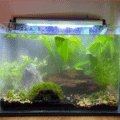
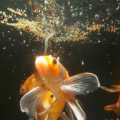


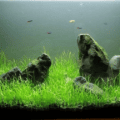

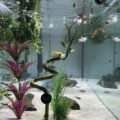
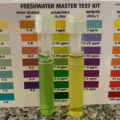
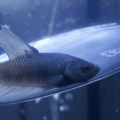
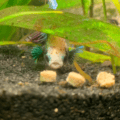
I have a small goldfish (1 inch) in a 6 gallon tank, and will eventually get a 10-20 gallon one here soon, I have a heater/thermostat, air pump, and filter….Yet I just changed the filter today and changed 25% water, but still have Nitrite issues….Help?
Hi, for how long has the tank been set?
Try pouring some bottled bacteria starter in. Also, floating aquarium plants help with ammonia, nitrite, and nitrate.
Mind that your little guy may or may not nibble on the live plants.
P.S. Maintaining quality water in a small fish tank is way harder than in a lager 10 to 20-gallon tank. Water parameters easily fluctuate in and out of their safe range within such a small volume of water.
Hope this helps.
Hi! My fish tank has one slim bodied comma on goldfish in it and it is a ten gallon. I’ve had no problems so far with nitrate and nitrite levels while my new fish has been in it and today before I did a 30% water change I tested the waters and the nitrate and nitrite levels had spiked to an unsafe level. I Went ahead changed the water As planned and tested it again and they had gone down slightly. What should I do? After a water change, do I just wait for the levels to drop or should they have instantly dropped?
Hey , I’ve a saltwater 200litre tank on a new cycle for 4 weeks , the parameters of the water are
KH. 11
PH. 8.2
NH4. 0.05
NO2 80
NO3 1+
The nitrites appear to be stuck , I’ve done a 20%water change but this has not brought them down
Hope you can help
Ray
Hi, Ray,
Let me just start by saying that this is an enormous amount of Nitrite! I have 2 additional questions before formulating an answer:
1. Did you, by any chance, try to measure with a different test kit (different brand, etc.) to get a second opinion on these readings?
2. How many days since the cycle started?
Regards
Hey. So I need to reduce my nitrites ASAP because my fish are showing signs of ick. How can I do this? I bought Nitra-Zorb and put that in my filter. It’s been in there for about 3 days. I’ve changed the water every other day JUST to get the nitrites to lower but no luck. I have plenty of Beneficial bacteria, so that’s not an issue. Please help? I’m desperate and dont want to lose my glofish. I have tetras and danios.
I have a nitrite level of 3 over the weekend I changed from sand to stones which I’ve researched can be detrimental at first to the water cycle, I also messed up I cleaned the filter in tap water, ive jd the water tested today The levels are as follows
Nh3-0
No2-3 (bad)
No3-40
Ph7.5
Apparently the only thing wrong is the no2, all of my fish are still alive but are staying near the top because of the lack of oxygen, I have used some microbe lift nite out2 to get the nitrate levels down, the water is still merky though. Can anyone advise if there is anything else I can do to get my water back to normal ASAP please I don’t want to come downstairs tomoro to a load of dead fish. Thanks in advance
Hey Gilly,
No worries, I’ll try to help, but anyone with experience can chime in if they want.
If there’s no ammonia, you can suppress the toxicity of nitrite by adding some salt to the aquarium. You can use kosher and rock salt, but not table salt. This will help your fish to handle the nitrite and blocks from entering their bloodstream.
Just know that salt should not be used if you have scaleless fish such as catfish. Tetra’s SafeStart (a brand of bottled bacteria) contains a good amount of nitrite-oxidizing bacteria, so it may also come in handy.
The surface movement of water also helps with oxygenation. A HOB filter provides good surface agitation if it’s set a couple of inches above the water’s line.
Hope this helps. Report back on how things unfolded.
Help! I know this is an older article but I don’t know where to turn. I have an established tank and it was getting a lot of black beard algae. In order to combat that, I’ve soaked everything in peroxide, including anubias plants that were covered in it. This worked like a charm for killing the BBA. I incidentally lost a killifish to dropsy, so I quickly removed her and got 2 rummy nose tetras and 1 oto catfish. Now my 10 gal. tank has 5 rummy nose tetras, 2 green corys, 1 oto, and 2 nerite snails. After getting the new fish, I notice one tetra has a little white S shaped worm stuck to the outside of her body. I treated with PraziPro, but like a dummy removed the whole filter because it had carbon in it. Took the cartridge out and soaked it in a bucket of aquarium water for a week. Meanwhile the anubias leaves have rotted. I repeated the PraziPro twice and worm is still on tetra but hasn’t grown, fish seems fine, no other worms seen in aquarium, and other fish not affected. Now, my tank is out of cycle… ammonia 0, nitrite .25ppm, and nitrates 40. I did 50 percent water change, put back the filter media which at this time was only partially wet but left the carbon out, as I’m still treating for the worm. I removed all rotting leaves from anubias and am stuck with only rhizomes and a few good leaves. In the meantime, bought some fake plants and a new house for fish to hide until my anubias grows back. Now fish are breathing fast. this morning, ammonia 0, nitrites still .25ppm, and nitrates 20. Should i forget about the worm treatment, put the carbon back in filter, do another partial water change and add tetra safe start?
Hey Cheryl,
I think you should consider using a separate hospital for the treatment. This way you can treat the fish, and cycle the main one in the meantime. You can keep the hospital tank safe with daily water changes. This will easily solve both your problems.
Hope this helps?
Regards
I have a 16 Gallon Bio Cube. Everything was great and now the nitrate level shot up to 80ppm. I have done 25% water changes several time. I only feed once a day. The live rock has gotten covered in algae. Any suggestions on what I can do.
Thank You
Hey,
I suggest that you research the “vodka method” and I’m not even joking on the name. It’s essentially adding inorganic carbon to the saltwater aquarium (in the form of alcohol) to stimulate the growth of bacteria that consume nitrates. You will need to be super precise with the dosing in such a small tank though, so be very careful and use a pipette.
Hope this helps!
Thank You. I will give that a try
Should the water changes be done with salt water or distilled water. I read distilled water but want to make sure I am doing this correctly. Thank You for your help
Hi, again Nick,
Ideally, the water changes should be done with distilled/RO water that has gone through remineralization. The remineralization in saltwater tanks is done via a salt mix. you add the water in a bucket, add the salt mix as per the manufacturer’s recommendations and start mixing. You can mix them by using a small powerhead or by hand.
Adding purely distilled water to the tank can be detrimental to an aquarium and I have an article on that which you can lookup by typing “distilled” in the search bar.
Good luck, and ask away if there’s anything unclear.
Thank You. This is a big help. I am going to look up the article now
My Betta fish tank is a month old and has had high levels of nitrites post a water change. . I used tetra safe start to get the nitrites down. The Betta is doing okay in water. Should I move him ?
It depends on the levels of nitrites. If it’s above 1 then you should probably move him.
If you don’t have a separate tank, then you can use a little bit of aquarium salt to minimize the nitrite intoxication.
Hope this helps.
I have a 2.5 gallon tank for my one betta fish. It has a filter in it and have had him since end of July 2019. I tested the water and the nitrate and especially the nitrite levels are extremely dangerous. I ordered a new cartridge for my filter. I have done 25% water change and use conditioner each time. I feel like the levels have gotten worse in a week. What is the best thing I can use and do? Is that tank size sufficient? I also wanted to note I have a heater and water temp is 81 degrees.
Hi Christine.
I would definitely scale to at least a 3.5-gallon tank, preferably 5.
The smaller the aquarium is, the more volatile the changes in water parameters are.
Because of the confined space, whenever something goes wrong it tends to totally throw the fish tank off balance.
Anyhow… You can add a little salt to prevent the betta from nitrite poisoning. You can also add plants to suck up the excess ammonia, nitrite, and nitrates. You should probably add some bottled bacteria to further cycle the tank (Tetra SafeStart is what I can recommend for this).
Check if something is rotting inside. Don’t overfeed *drop as little food as needed for the betta to have its meal). For now, you could feed every other day. Don’t worry, you won’t starve your betta this way, you’ll just reduce the chance of food degrading.
Hope these tips help!
Report back to me when everything gets back to normal.
P.S. Still, go for a bigger tank if you can.